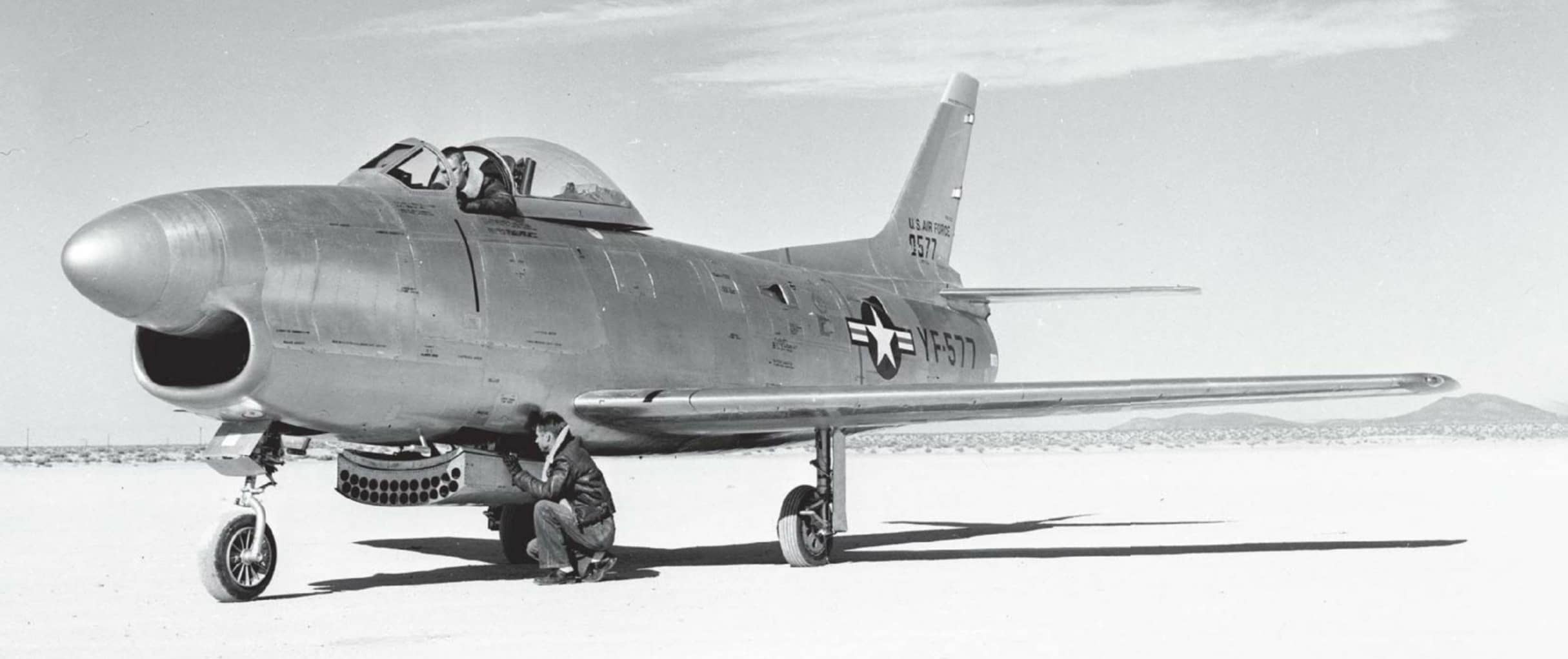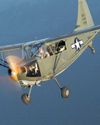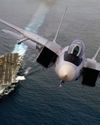Prøve GULL - Gratis
Sonic Boom Salesman
Flight Journal
|February 2019
Adventures of a cold war interceptor pilot

The cold war essentially guaranteed that all human nerves in the USA and USSR would be on edge. Tensions were on steroids for nearly two decades. Ubiquitous fallout shelters and air-raid sirens were the norm, designed for wary civilians that periodically trained for possible incoming air-raid onslaughts. The USA and the USSR had missiles, fighters, and bombers loaded for bear and poised to fly at a moment’s notice. This was not only near the U.S. borders but also scattered throughout the entire country. Meet Capt. Danny Cox, a U.S. Air Force (USAF) Cold War interceptor pilot, a breed that was a major factor in America’s defensive war plan.
Cox joined the USAF in February 1957 and learned to fly in bare aluminum Beech T-34A Mentors and North American T-28A Trojans at Moore Air Force Base (AFB) in Texas. Later he flew Lockheed T-33A Shooting Stars at Greenville AFB in Mississippi for jet qualifications, and received his wings mid-1958.
Cox, standing at a towering height of 5 feet 4 inches, barely met the minimum height requirement to fly fighters at the time, but ended up logging more than 2,400 hours of fighter time throughout his career. A product of his height, he had earned call signs such as “Two Cushion,” “Mighty Mouse,” “Madison Avenue Midget,” and “Compact Crusader.” Having had the opportunity to work closely with Cox for this feature, I noted that he has the admirable quality of being humble about his height and carries no chip on his shoulder. In fact, he pitches in on the fun if there is an opportunity to bring up “shorty” jokes or comments. In the fighter communities, his small frame meant that he could withstand and recover from G-forces much better than his alpha-male peers. Being short is a desired trait when flinging around fast movers.

Denne historien er fra February 2019-utgaven av Flight Journal.
Abonner på Magzter GOLD for å få tilgang til tusenvis av kuraterte premiumhistorier og over 9000 magasiner og aviser.
Allerede abonnent? Logg på
FLERE HISTORIER FRA Flight Journal

Flight Journal
ELLIPTICAL ELEGANCE
Flying and evaluating the Seafire Mark III
4 mins
November - December 2025

Flight Journal
IRON DOG
Fighting the Pacific and the P-39 at the same time
14 mins
November - December 2025

Flight Journal
Fighter Pilots: A Warrior Clan
TAKE A HARD LOOK at the two young men in these photos. Do they look as if they were bent on killing one another? On the left we have a young, unknown enlisted Japanese pilot standing in front of a Nakajima Ki-27 \"Nate,\" one of Japan's earliest monoplanes that led to the much vaunted Zero.
3 mins
November - December 2025

Flight Journal
KEN WALSH THE FIRST CORSAIR ACE
Medal of Honor pilot's combat adventures
12 mins
November - December 2025

Flight Journal
Big Chief's Little Chief
Thunderbolt action with the Wolf Pack
11 mins
November - December 2025

Flight Journal
ENEMY PILOTS SPEAK Voices from the other side
All too often American students of air warfare forget that enemy aircraftwhether Messerschmitts or MiGs-were flown by human beings with the same motivations and traits as Allied airmen. More often than not, the only difference between friend and foe was the paint on the airplane and where they landed. Therefore, we've assembled a variety of accounts from WW II Axis fighter pilots, men who were more than simply targets.
11 mins
November - December 2025

Flight Journal
FLYING THE FW 190
A legend gets checked out in the Butcher Bird
15 mins
November - December 2025

Flight Journal
DOUBLE-THEATER ACE
The fearless missions of legendary fighter pilot Col. John D. Landers
12 mins
November - December 2025

Flight Journal
WARBUG IN THE PACIFIC
Surviving combat in a Stinson OY-1/L-5
10 mins
September - October 2025

Flight Journal
WINGS OF THE FLEET
Celebrating the U.S. Navy's 250-year legacy
9 mins
September - October 2025
Translate
Change font size

